Google recently rebranded its Bard AI to Gemini and made a dedicated Gemini AI app available for smartphones. This means you can access it as a web service as well as through the Gemini app. Gemini, being a full-fledged AI model, is much more powerful than Google Assistant and can serve as an effective replacement for it.
If you're wondering how to use Gemini on your Android device and make it a replacement for Google Assistant, this is just the guide for you.
Installing Gemini AI On Android
Currently, the Gemini app is only available for download via the Google Play Store in the United States but is expected to become available in other regions soon.
- If you are a resident of the US, you can simply download the Gemini app from the Play Store. On the other hand, if you're located in any other region, you will need a US Google account to download the app.
- To download it, open the Play Store on your Android device and search for the 'Gemini' app. Once it appears, tap the 'Install' button.
- After it is installed, open the app and tap the 'Get Started' button. As the app starts, tap on the 'More' button and then the 'I Agree' button to accept the terms and conditions.
- If you don't have the Gemini app in the Play Store in your region yet, you can download this APK file and install it to run Gemini on your phone now.
Using The Gemini App
Once you've downloaded the Gemini App and installed it successfully, you can use it to learn new skills, create content, and use your phone more productively. Using Gemini through the app is similar to using it through the web app.
Here are the steps by which you can use the AI tool.
- Tap the Gemini app icon on your phone to launch it. Once the app opens, you will see a few suggestions at the top that can help you perform tasks like creating a social media post.
- There will also be a search box at the bottom where you can type in prompts to create content or look up information. You can also use voice commands or take pictures using the camera icon to include them in your prompts.


- Enter a prompt in the area, such as
List some of the best ways for improving memoryand tap the small arrow icon to get results. - You can also generate images using the app with a prompt like
Create an image of a lone tree with red and gold leaves on a green mountain next to a blue river. Gemini will provide four variations of the image requested.
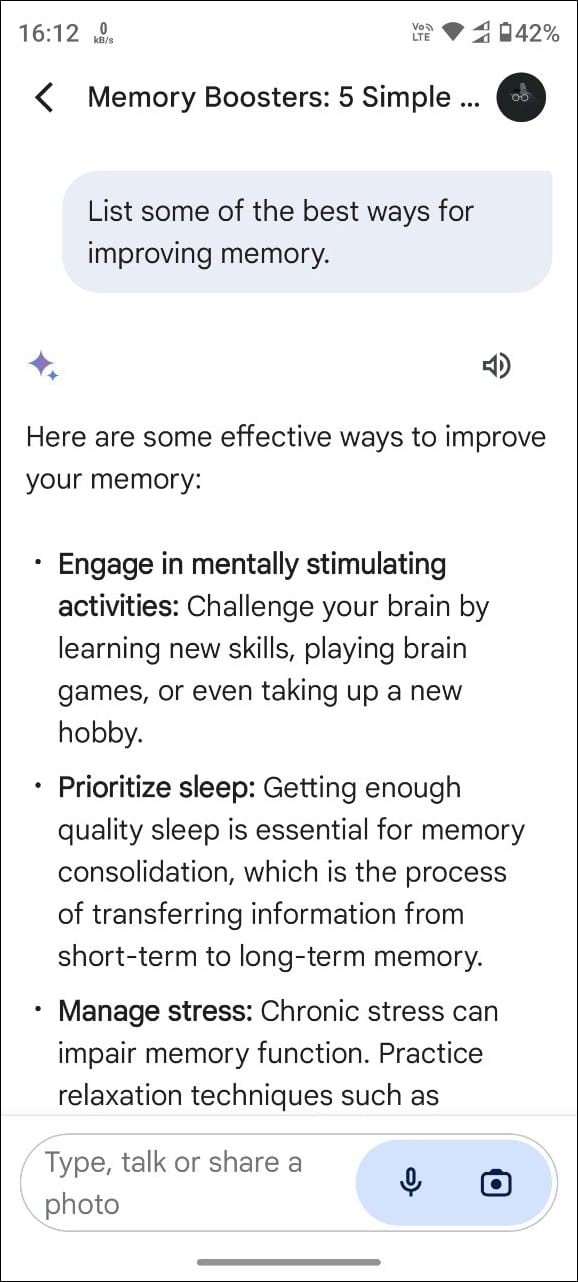

These are just a few examples of how you can use the Gemini app on your Android phone, but the possibilities are endless. Just keep in mind that the more precise and detailed the prompts are, the better the results will be. You can even use extensions with Gemini in the Android app to further enhance its capabilities.
Making Gemini The Default Assistant
Once you've installed the Gemini app on your Android phone, it will automatically replace Google Assistant. While Gemini automatically replaces Google Assistant once it's installed, you can also manually do so if there's any problem.
- Open the Gemini app on your Android device and tap on your profile picture in the upper right corner.
- A new pop-up will appear with various options, like your Gemini Apps Activity, Extensions, and Updates. Tap the 'Settings' button to open the Gemini Settings page.


- Next, tap the option that says 'Digital Assistants From Google' to bring up the available options. It will show both Gemini and Google Assistant.
- Finally, tap to select Gemini and make it the default assistant on your device.


It is important to note that not all features of Google Assistant are currently integrated into Gemini. For instance, Assistant features like Routines, Interpreter Mode, and Reminders are yet to make their way to the AI model.
Fortunately, you can easily switch back to Google Assistant at any time by following the same steps and selecting Google Assistant instead of Gemini.
Using Gemini as the Default Assistant
Once Gemini is your default assistant, performing any of the usual Assistant tasks through gesture-based or voice-based actions will bring up Gemini instead of Google Assistant. You can bring up Gemini just like Google Assistant.
- Say 'Hey Google', or touch and hold the 'Home' button on your device, or use the slide gesture from the bottom left or right corners of the screen to activate Gemini as your assistant. This will bring up its interface, where you can type or speak a prompt or add an image using your phone's camera.
- Once you've entered the prompt, such as
write a short essay on wearable technology, tap the arrow at the bottom right to view the results. You can use Gemini to ask anything on the go, but that's about it right now.
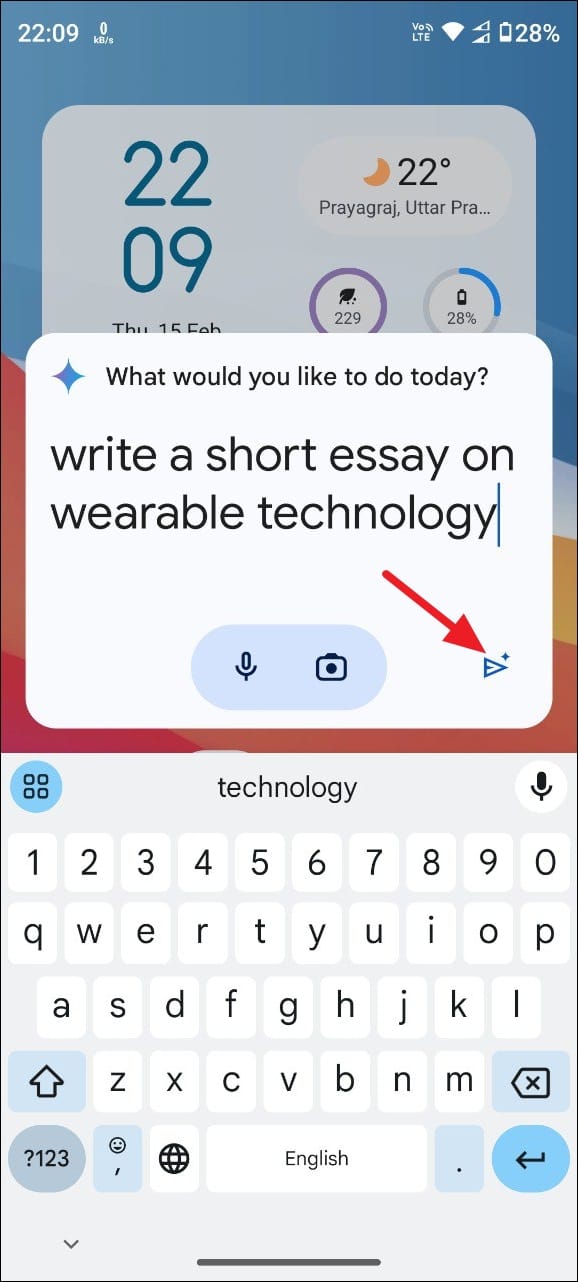

Gemini App Not Working? Here's How To Fix It
If you have installed Gemini by sideloading its APK, sometimes the app may fail to launch. It may show errors, like, 'Gemini Isn't Available' or 'Location Not Supported'.
You can fix such errors by following these steps.
- Open the Google app on your smartphone and tap on your profile picture in the upper right-hand corner.
- Then, tap the 'Settings' button to open your Google Account Settings page.


- On the settings page, tap the 'Google Assistant' button to bring all the Assistant-related settings.
- From here, you will need to select the 'Languages' option, which dictates the languages you can use to interact with Google Assistant.


- Tapping on the 'Languages' button will show you the currently active language. You will need to change the language to 'English (United States)' from here.
- After changing the language, relaunch the Gemini app. It should be working fine now.

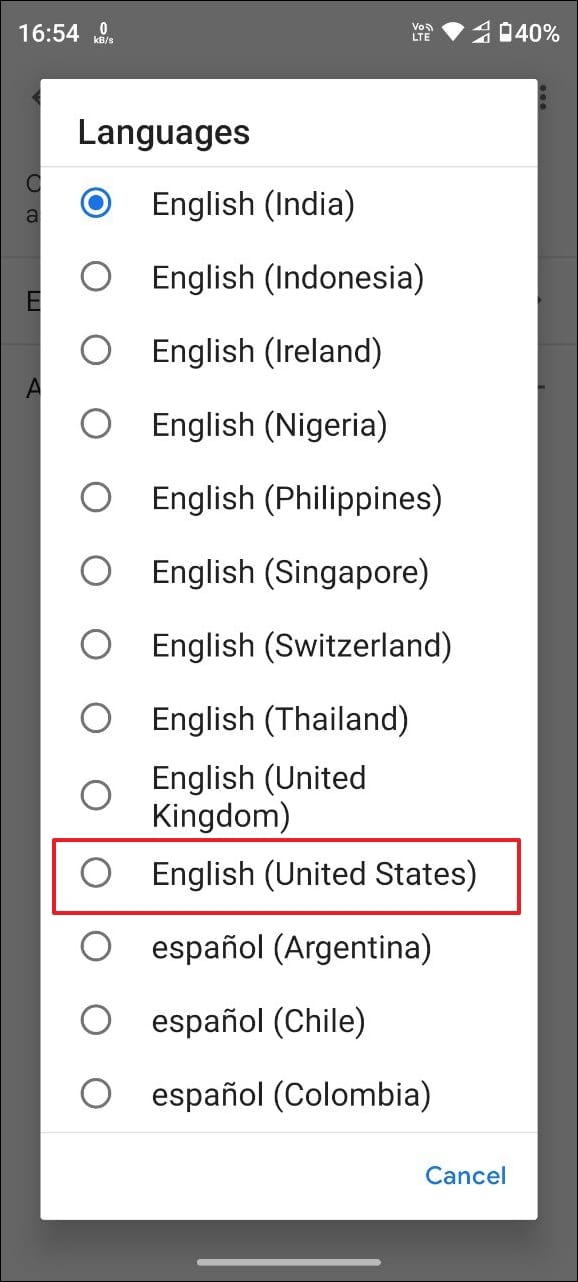
With these steps, you can easily start using the Gemini app on your Android device, replacing Google Assistant. While the app is currently available only in the United States, it is expected to become accessible in other regions soon. Google has yet to make any announcement regarding a specific launch date yet but rest assured, users will be notified through official channels when it becomes available.

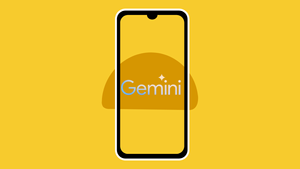




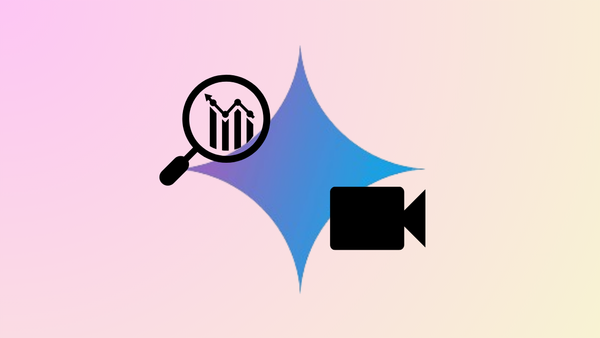

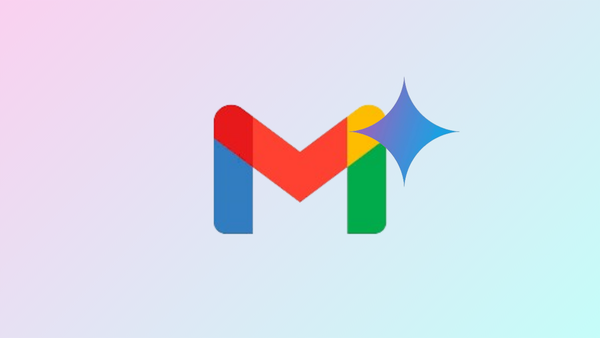

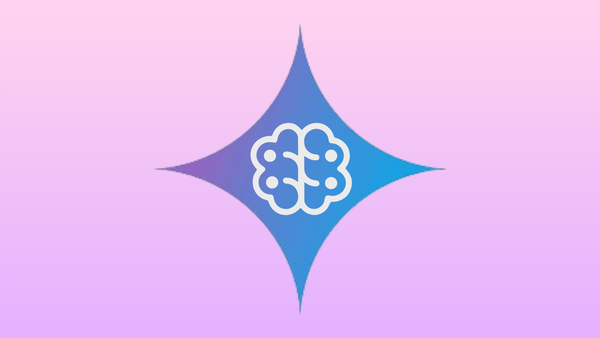
Member discussion